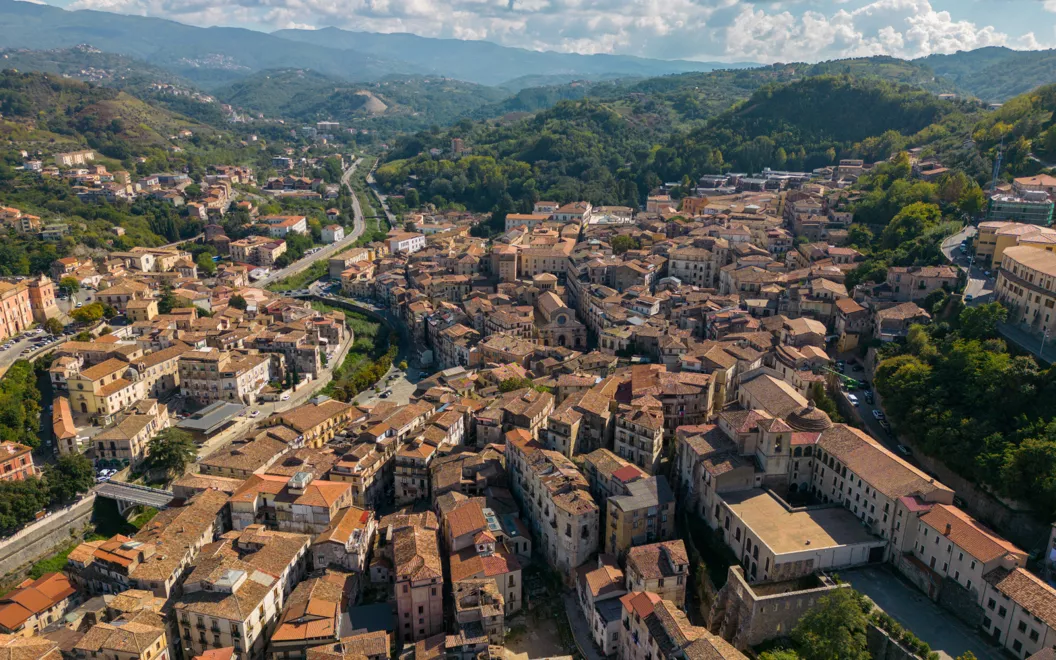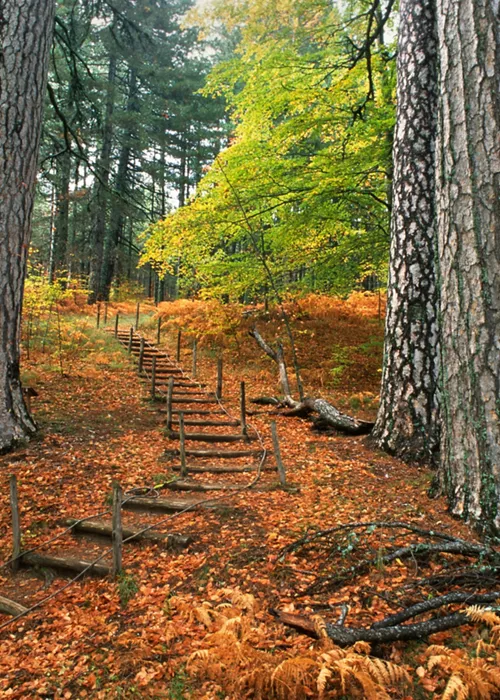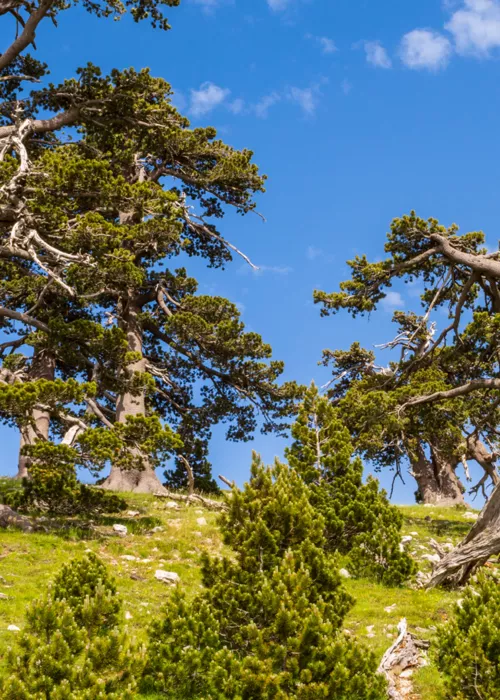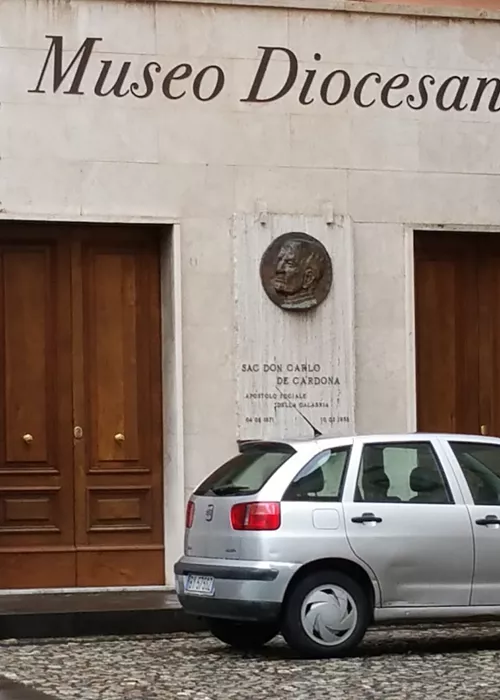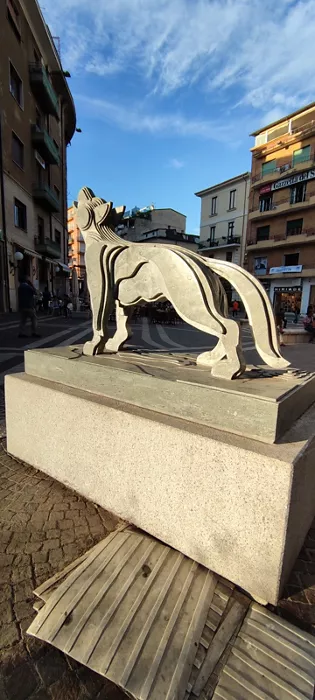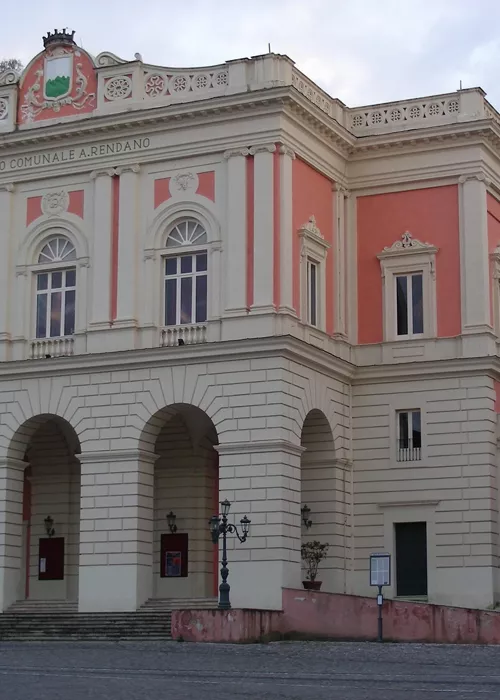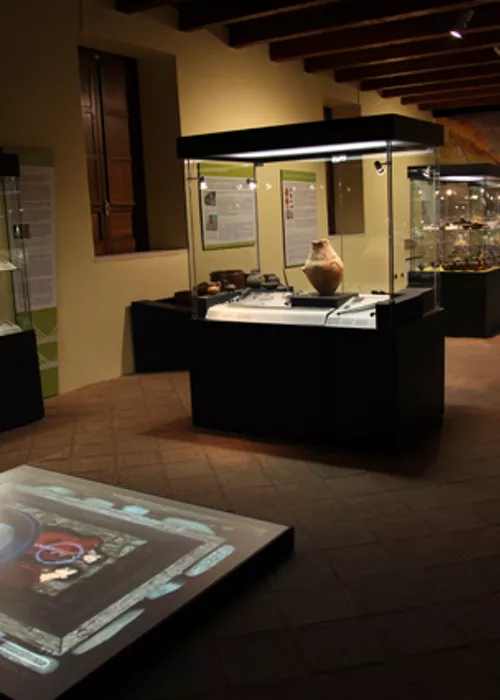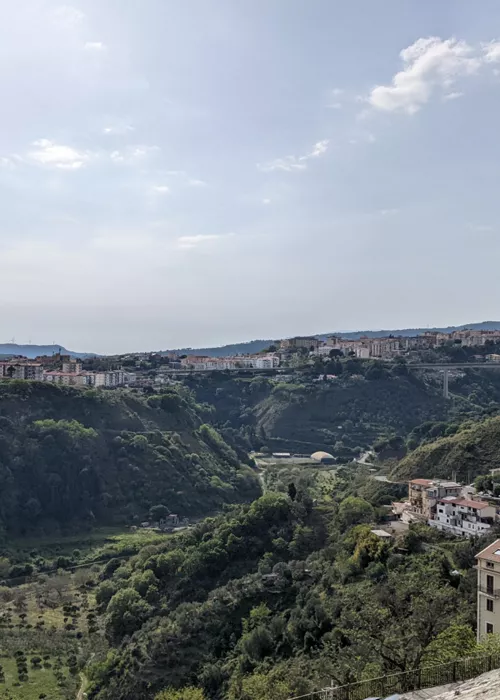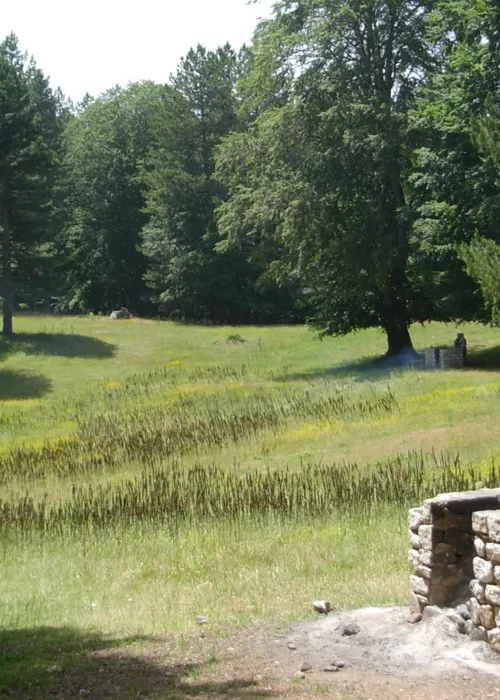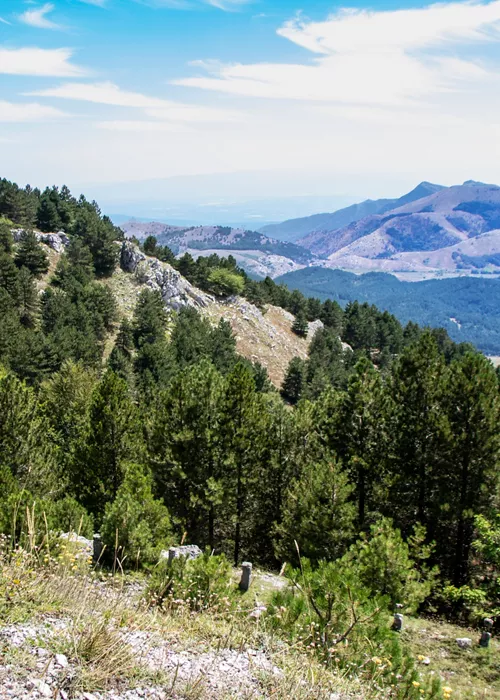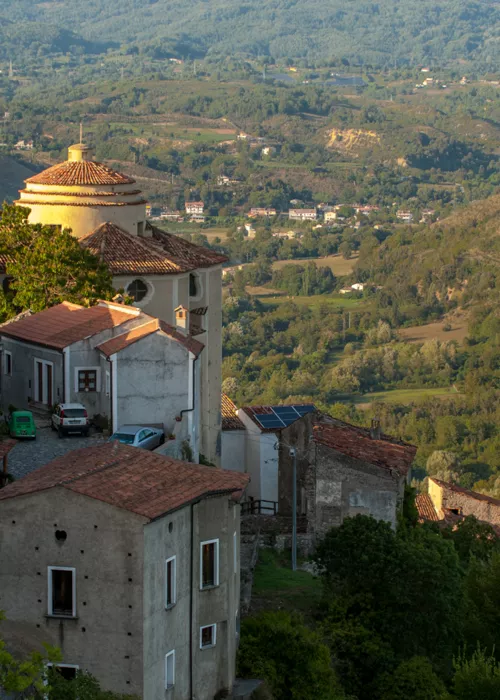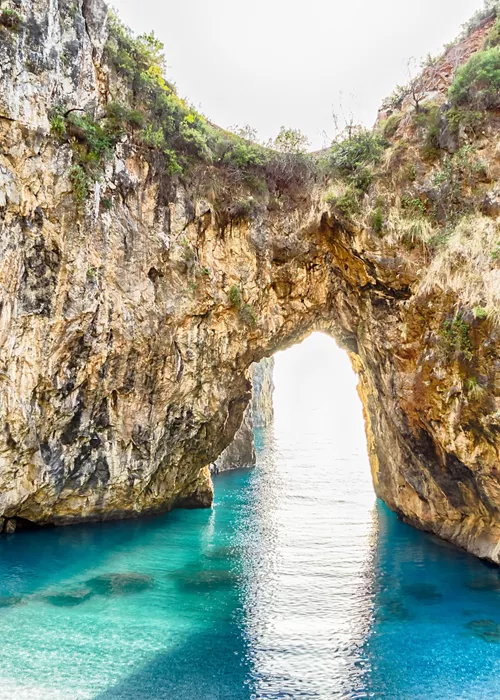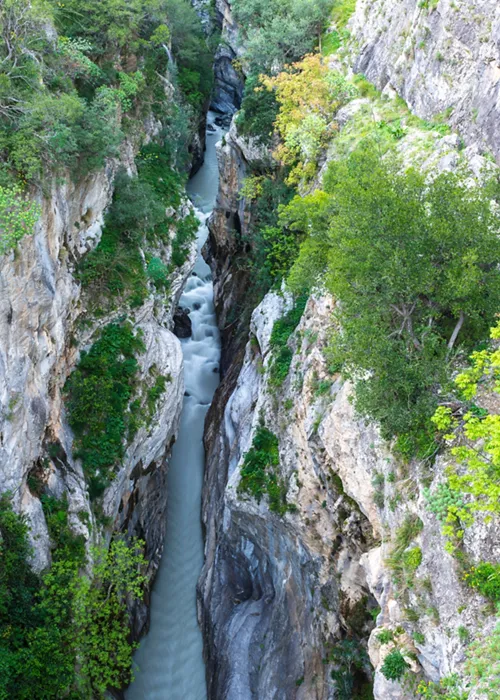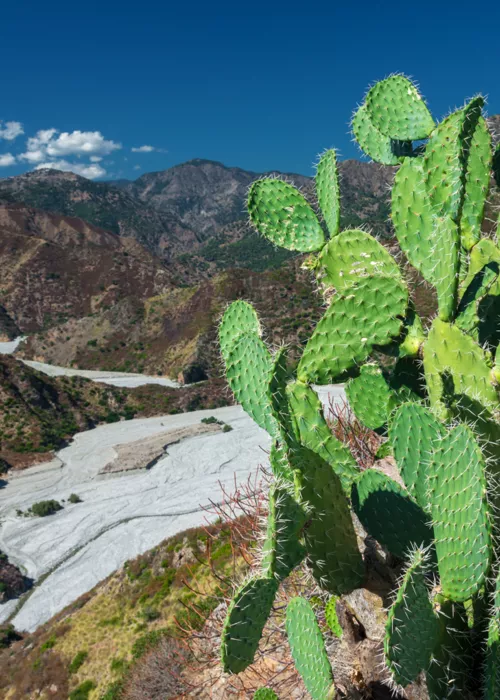Cosenza: the ancient pride of the Athens of Italy
9 minutes
Built in a strategic place in the Crati Valley, Cosenza traces its roots back to the fourth century when the Bruzi settled on the hills at the confluence with the Busento tributary of the Crati river.
The history of Cosenza
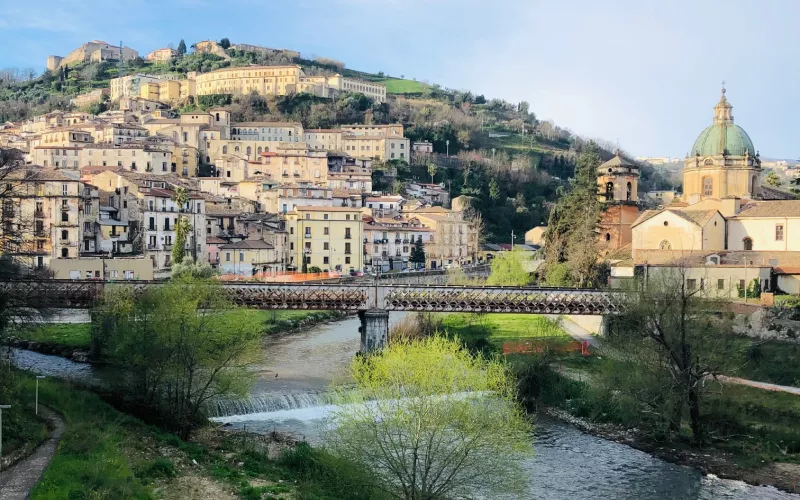
Known as the Athens of Italy for having been the birthplace of Parrasius and Telesius, two of those Cosenza scholars for whom the city was culturally illustrious, Cosenza was first a Longobard and then a Byzantine dominion under the name of Constantia, and then a Norman one.
At the forefront of economic activity among Calabria's capital cities, Cosenza occupies a prominent place in the cultural and artistic sector. The work of the Accademia Cosentina, founded by the humanist Parrasio at the beginning of the 16th century and to which Bernardino Telesio, the philosopher of nature, belonged, continues its cultural work in the University of Calabria, the largest state university in the region and the first university campus in Italy.
Founded as the centre of the Bruzii on the slope of the Pancrazio hill, the old town lies along the banks of the Crati and, among its alleys, tells us its long history full of medieval atmosphere. The historical centre, one of the most beautiful and ancient, with monumental buildings, manor houses and churches and criss-crossed by narrow, winding alleys, has been experiencing a big revival in recent years. Underneath it, on the plain below, the new city spread out, starting in the last decades of the 19th century, in a regular pattern.
The Alfonso Rendano theatre, the historic Cinema Teatro Italia and the Teatro Stabile d'Innovazione della Calabria are the driving forces behind the numerous theatrical initiatives that animate the cultural life of the city. The cultural centre of the city is the Museum of Brettii and Enotri, housed since 2009 in the fifteenth-century monumental complex of S. Agostino. A large dome characterises the new Museum of Science and Planetarium named after Giovan Battista Amico, a 16th-century astronomer and scholar from Cosenza. The strong cultural ferment of Cosenza is confirmed by the magnificent Bilotti Open-Air Museum, with numerous reproductions of works of art that stand out along Corso Mazzini, the city's main avenue.
The territory of Cosenza, which extends from almost 2,000 metres of the Sila Grande plateau to the legendary beauties of the Tyrrhenian and Ionian coasts, is characterised by numerous art and culture sites and very different areas, unique for their scenic beauties. A rich biodiversity characterises the vast areas of the Sila National Park and the Pollino Park, offering numerous leisure and holiday activities in both the summer and winter months. The more than 230 kilometres of coastline, stretching between the Tyrrhenian and Ionian seas, are known for the beauty of the coastline and the diversity of the landscapes.
Diocesan Museum
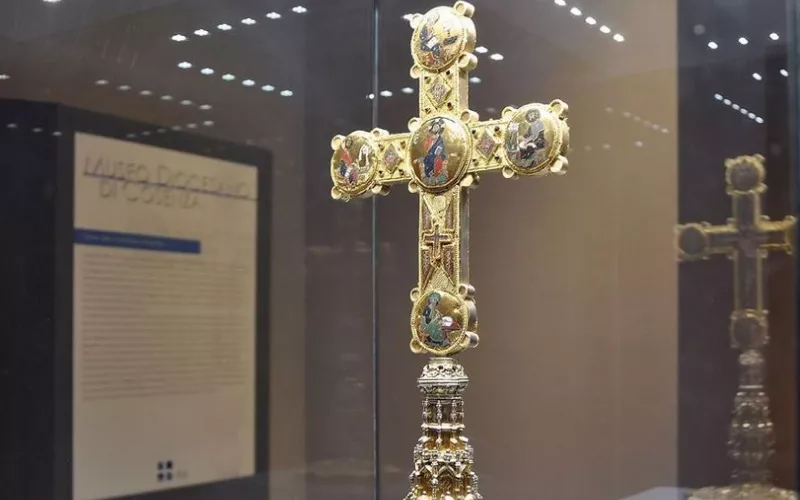
Located between the Archbishop's Palace and the Cathedral Church, the Diocesan Museum of Cosenza serves as an ideal link between the history of yesterday and the story of the present and the soul of the project of revisiting the past and discovering the present. In the various rooms of the museum there are numerous works from some Churches of the Diocese, including the beautiful polyptych of the Annunciation (1545) of the Church of Turzano, now Borgo Partenope. Canvases, silverware, liturgical vestments and many precious objects such as the "Pope's" chalice, a large silver and filigree work from Marano Marchesato, two ivory statuettes attributed to the school of Michelangelo and the 16th century glass chalice from Celico. Housed in the semicircular hall, the Stauroteca, or reliquary cross, which tradition says was donated by Frederick II of Swabia on the occasion of the consecration of the Cathedral in 1222, is perhaps the most precious work in the Museum. Made in the 12th century of embossed gold, vermicelli filigree, enamel, adamantine and rock crystal, it has become the emblem of the city. Also of great value are the Torquemada chalice from the 15th century, the icons from the 16th century, canvases from the 17th and 18th centuries, and part of the rich treasure of the Madonna del Pilerio, protector of the city and the Archdiocese. In the Pinacoteca (art gallery) next to the evocative Marian paintings by Giuseppe Pascaletti (18th century), the splendid painting of the Immaculate Conception by Luca Giordano (17th century) and the precious San Gennaro by Andrea Vaccaro (17th century) dominate.
The Cathedral
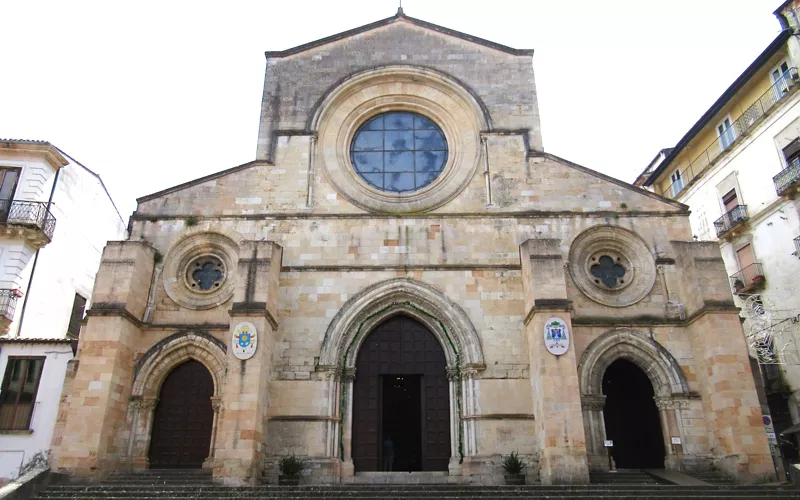
The Cathedral of Cosenza is among the best known and most special sacred buildings in Southern Italy. Declared a "Heritage Witness to a Culture of Peace" by UNESCO in 2011, the building and its square have been the centre of gravity and witness to the history and life of the city. Although its origins are unknown, studies carried out in the late 1940s date the work back to the mid-11th century.
The tripartite façade, which announces the division of the interior into three naves and is dominated by an ancient rose window, and two smaller ones above the portals, fully delineates the belonging to the Cistercian Gothic style also recognisable in Fiore Abbey of San Giovanni in Fiore. The simplicity of the interior is embellished by numerous chapels and monuments: the chapel of the Madonna del Pilerio, with the homonymous painting on a board that represents one of the most important artistic products of the artistic-cultural movement of the period; the chapel of the Archconfraternity Orazione e Morte; the funeral monument of Isabella of Aragon placed in the transept, a sculpture known for being one of the first examples of French Gothic in Italy; the precious wooden crucifix of the 1400s from the chapel of the Telesio family, with its evident late Gothic expressiveness.
The discovery, in an ancient chapel, of some fragments of the primitive floor from the Swabian era, leads to the hypothesis that, at the time of its foundation, the Cathedral, in addition to being entirely frescoed, was paved with mosaics such as the Patirion di Rossano and the church of Sant'Adriano in San Demetrio in Corone.
MAB Bilotti Open-Air Museum
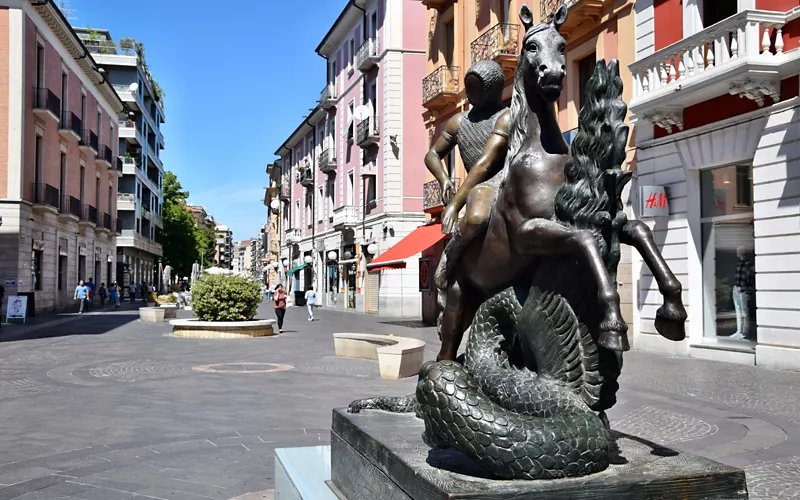
Fitted out in 2006, and enriched in the following years, the MAB is a veritable open-air art gallery. Unicum in the southern artistic scene, was born thanks to the will of the Bilotti family: several works of modern and contemporary art by national and international artists enrich the main commercial artery of the city. Works by the Frenchman Sasha Sosno (the Three Doric Columns, the Bronzes of Riace and the Seven of Hearts), Giorgio De Chirico (The Great Metaphysician, The Archaeologists, Hector and Andromache), Giacomo Manzù (the Great Cardinal and the Head of Medusa) and Salvador Dalì (the beautiful bronze group Saint George And The Dragon) flank the works of the Catanzaro artist Mimmo Rotella: the bronze Rinascita della Cultura and the massive Lupo della Sila in green travertine.
Completing the museum itinerary are La Grande Bagnante by Emilio Greco, a symbol of feminine beauty, the works of Pietro Consagra (Il Ferro Rosso, I quattro paracarri and Bifrontale) and the recent Testa di Cariatide by Modigliani.
Svevo Castle
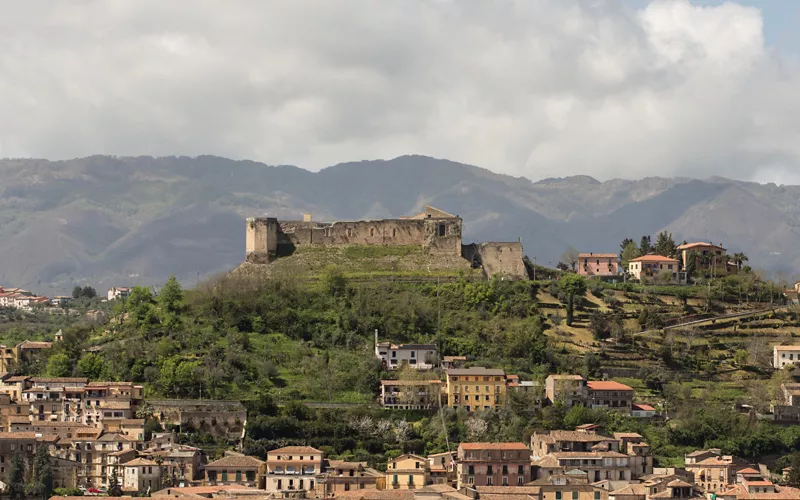
Built on Pancrazio Hill, the Norman-Swedish Castle is the most prominent monument of the city. Most likely built by the Saracens on the ruins of the ancient Bruttia fortress, it was restored by Roger II in 1130, and, after the disastrous earthquake of 1184 that made it completely unusable, it was restored by the will of Frederick II of Swabia (Stupor Mundi) who, in 1239, added the octagonal tower. A visit to the castle is certainly a unique experience: the Angevin corridor, which once delimited the castle's vast courtyard from the hall of arms, the "sala del trono" ("throne room") and the 19th-century ramparts, lead to the ruins of the Capuchin church and convent visible next to the manor house.
Rendano Theatre
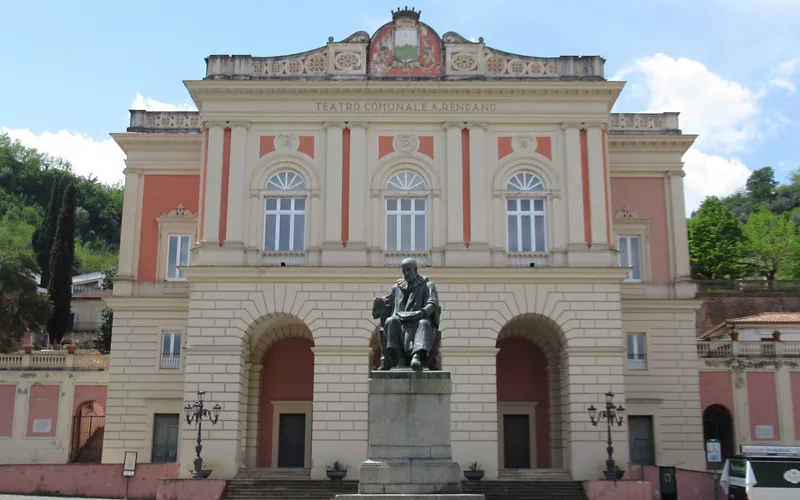
Dedicated to the pianist Alfonso Rendano, the theatre has its roots in the Renaissance and bears witness to the profound cultural ferment that has always run through the city of Cosenza until the 19th century. Built to a design by architect Zumpano in 1887 and completed in 1909, it was inaugurated the same year with the representation of Verdi's Aida. The building, in neoclassical style with an eclectic Umbertine façade, was strongly criticised for the expensive pomp of the soirée and the elegant toilettes of the ladies of the upper bourgeoisie and the city aristocracy. From the portico, finely decorated with smooth ribs and pilasters, you can access the interior. Originally decorated with paintings and stucco, which were destroyed during the bombing of World War II, the theatre has eight hundred seats distributed over three tiers of boxes arranged in a horseshoe shape.
The deep stage, set up for opera and drama performances, symphony concerts, dance performances and conferences, is closed by the ancient historical curtain, the work of the Neapolitan Paolo Vetri, which illustrates the arrival in the city of the Duke of Calabria Louis III of Anjou and Margherita of Savoy.
At the heart of the artistic activities of the entire Region, Rendano continues to meet the demand of an increasingly demanding and numerous public.
Palazzo Arnone National Gallery
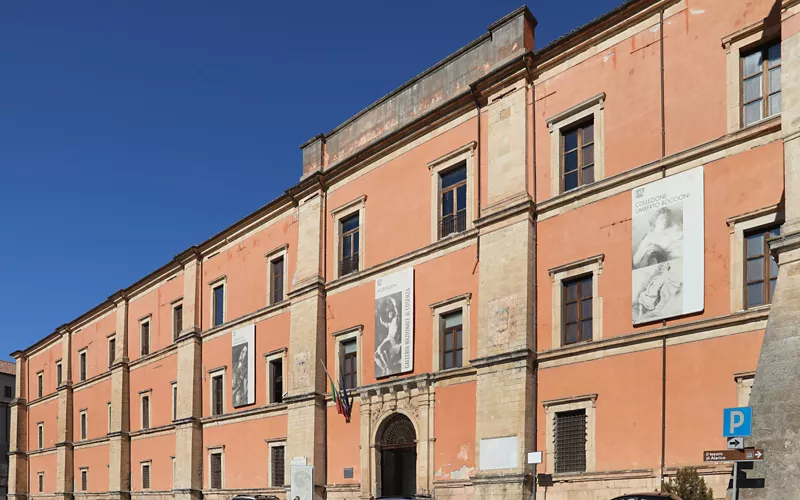
A large barrel-vaulted hall, decorated with the coat of arms of the Kingdom of Naples, gives access to the National Gallery located in the prestigious Palazzo Arnone. The collection, which since the 1980s has been acquired by the State heritage, documents the most significant moments of Italian art, focusing on southern art, from the sixteenth to the twentieth century: Mattia Preti, Sebastiano Conca, Pietro Negroni, Corrado Giaquinto, Luca Giordano, and Umberto Boccioni are just some of the artists who enrich the gallery with their important works.
Brettii and Enotri Museum
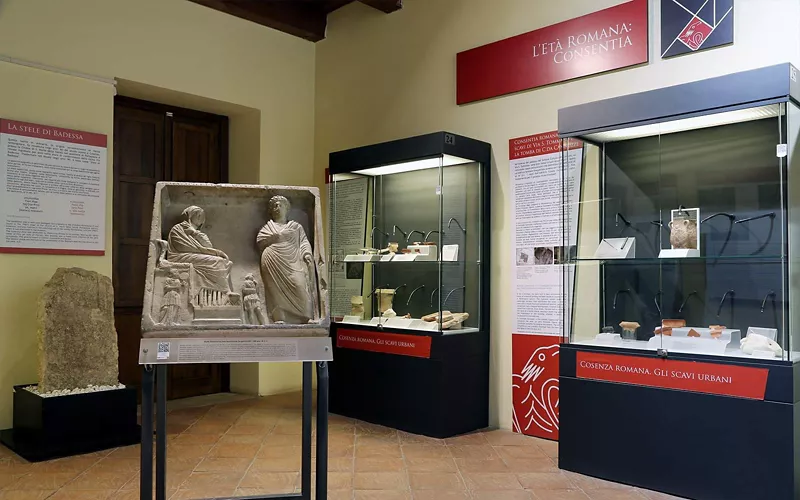
A cultural centre of great interest, the Museum of Brettii and Enotri, in addition to exhibiting a rich archaeological collection, also hosts temporary exhibitions, concerts and institutional meetings. The combination of art, archaeology and educational tools, including digital ones, allows visitors to experience culture in an innovative and pleasant way, in an appealing atmosphere in which Calabria's archaeology is available to those who wish to discover the area's ancient origins. The extensive archaeological collection housed in the facility, originating from urban excavations and various locations in the province, spans a broad chronological span. The main core consists of grave goods from the vast Torre Mordillo necropolis, a protohistoric centre overlooking the plain of Sibari, which declined with the arrival of the Sybarites (720 BC). Other important finds, discovered in the municipality of Corigliano Calabro, date back to the later Greek colonial period and testify to the existence of an extra-urban place of worship, possibly dedicated to a female divinity, which is considered one of the oldest in the Sybarite area. The latest acquisition dates back to the city's Roman period: an elegant funerary stele that is the most interesting epigraphic document found in the urban excavations. On the second floor of the museum, a collection of documents and memorabilia relating to the history of the Risorgimento in the city fits in well with the Sant'Agostino complex: at that time a Bourbon prison, it was probably here that the brothers Attilio and Emilio Bandiera were held while awaiting execution in the nearby Vallone di Rovito.
Calatrava Bridge
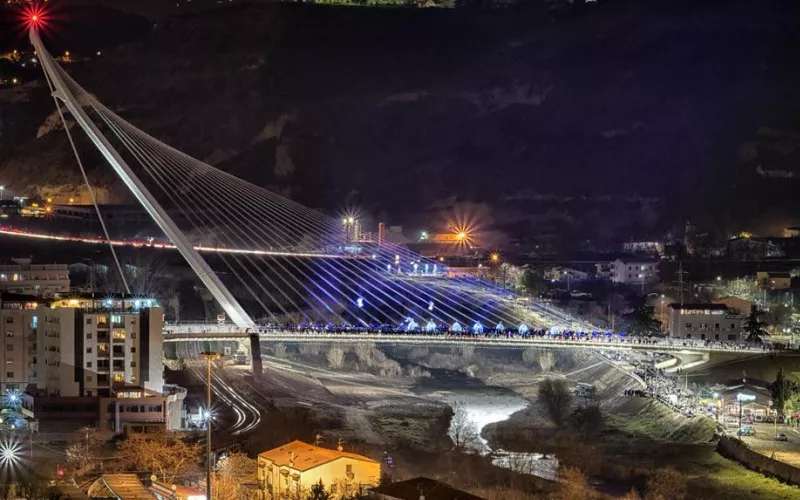
Having become a characteristic feature of the city skyline a few years ago, the impressive Calatrava Bridge connects two areas of Cosenza divided by the Crati River, in the southeastern part of the city. Designed by the famous architect Santiago Calatrava, it is considered the tallest cable-stayed bridge in Europe: all the steel cables that support the road deck run from a single 104-metre-high inclined pylon. Similar in shape to a giant harp, symbol of harmony, the work, dedicated to San Francesco di Paola and considered one of the most significant in southern Italy, is similar to two other bridges by the same architect: Siviglia ("Seville") built in 1992 and California in 2004.
Gastronomy
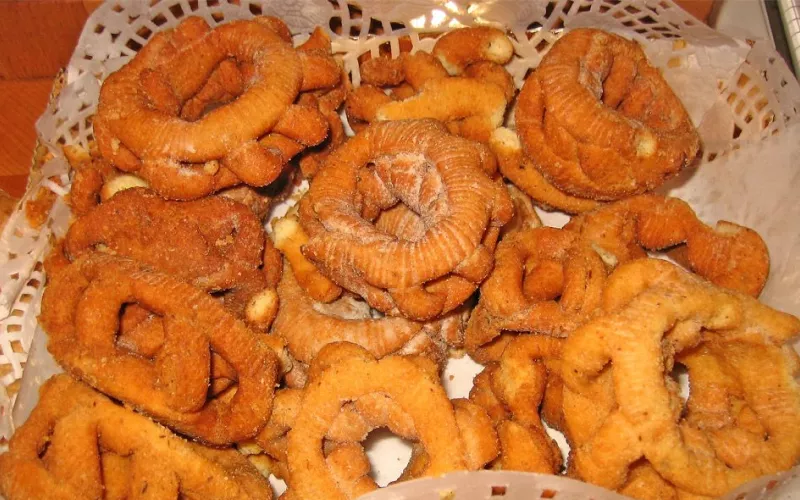
In addition to the scenic, historical and artistic beauties, Cosenza is home to a rich gastronomic heritage that brings to the table rather simple specialities flavoured with many spices. Fusilli, pasta and ara tijeddra, fried potatoes and piperade (a pepper dish), broccoli rabe and sausage, lagane and ciciari (broad noodles and chickpeas) are accompanied by wines, generally of high quality, red and white. The typical desserts, linked above all to religious festivals, are a unique experience for every palate: Mostaccioli di San Giuseppe, focaccia made from bee or fig honey, cooked must, flour and almonds, whose typical forms derive from the ancient offerings to the gods, are some of the products that the Cosenza tradition offers. The preparations related to the Christmas period deserve a separate mention: cuddrurieddri, salted doughnuts, turididdri and scaliddre, which have become part of Cosenza culture by right, are distributed along the main city streets via special finger food kiosks.

